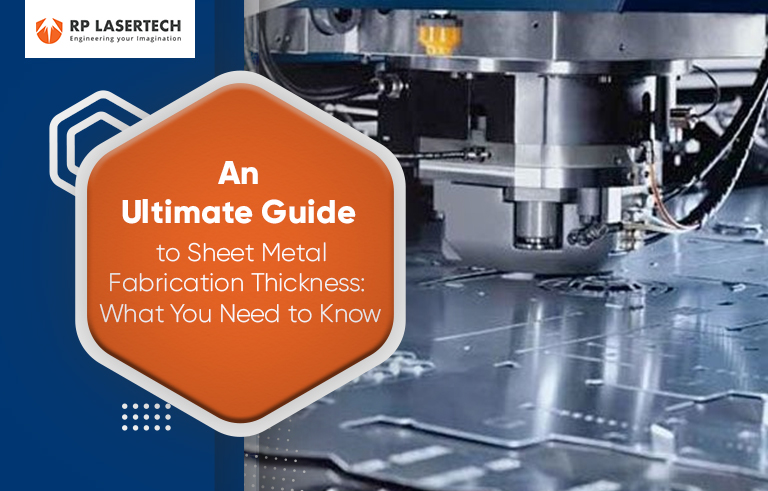Sheet metals are used for many things, including roofing, welding, automotive manufacturing, food processing, and special precision sheet metal fabrication. But you may be wondering how those smooth, beautiful pieces are measured. This thickness is determined by a system called the gauge system.
This article explains the importance of sheet metal gauges for fabrication. Also included are instructions for measuring gauge and choosing the right metal thickness.
The importance of sheet metal thickness
A job’s workflow is affected by the thickness of sheet metal from start to finish. The sheet metal vendors near me plan each move using the blueprint in metal fabrication design. The method of completing a project will differ depending on the thickness of the material.
The fabrication process by a sheet metal fabrication company includes steps such as bending and cutting, which require selecting the right thickness and tools. The thinner the gauge, the more pressure it takes to bend it, and the stronger the equipment, the easier it is to cut it. If you need sheet metal laser-cut, bent, weld, ground, powder-coated, or powder-coated, stainless steel fabricators have the tools, skills, and knowledge to handle any big or small project.
How does gauge in sheet metal thickness work?
Metal thickness is measured by gauge. The gauge of metals may differ, but their thickness may be the same. For example, the gauge of an aluminum sheet differs from that of a galvanized steel sheet of the same size.
North Americans often use the term gauge. The gauge is most commonly used to describe metal thickness by engineers.
Gauge (Ga.) is a unit of measurement for diameter. The diameter is large when the gauge is small, so the thickness is also large. The metal’s thickness is expressed in weight per square foot.
Metals with the same thickness but different gauges are ferrous and nonferrous. Metal gauges are included on the chart for sheet metal, however.
A standard sheet of steel with a gauge of 10 is 3.416 millimeters thick, while a sheet of aluminum, brass, or copper with the same gauge is 2.88 millimeters thick. The thickness of standard steel of 20 gauge is 0.912 mm, whereas the thickness of non-ferrous steel is 0.813mm.
Measuring Sheet Metal Thickness
Converting metal thicknesses in inches to gauge is generally not standardized by a sheet metal company in Manesar. The tape must be used to measure the thickness of sheet metal in order to calculate its gauge. The thickness of sheet metal can be matched to the appropriate gauge on the chart by using a sheet metal gauge.
Transporting sheet metal often involves forming it into flat pieces and rolling it. Hot or cold rolling can be used to form sheet metal.
A slight variation in thickness is tolerable in the metal gauge, however. Steel metal thickness can be measured using this formula;
Steel Type Identification
Cold-rolled steel is generally the most common type of steel you will find. Steel of this type does not have any coatings or chemical additives. However, the zinc coating on galvanized sheet metal is 0.001 inches thick. Stainless steel, on the other hand, is chromium-coated to reduce corrosion.
Sample of square feet
Measuring a square foot is the best way to get an accurate result. It is easier to calculate the wall’s thickness with this square-foot piece’s help. There will be extra calculations if a larger or smaller piece is weighed.
Measure the weight of the steel metal
To convert the weight of the material into a pound per square foot, you will need to measure the weight. There is a close relationship between steel weight and gauge number. According to stainless steel sheet manufacturers in India, the weight per square foot of the material should be 41.82 pounds.
Inch Gauge Calculation
Inches are the gauge measurement of steel metal, calculated by multiplying your figure by 41.82. You will establish the accurate metal gauge of the steel metal above by referring to the U.S Standard gauge for sheet steel.
There is, however, a slight difference between this process for metals such as aluminum, brass, copper, zinc, lead, and aluminum alloys.
What is the importance of determining sheet metal thickness?
The thickness of sheet metal plays an integral role in nearly all metalworking processes. Sheet metal thickness is a crucial parameter in any metal fabrication process by a sheet metal company near me, whether it is galvanized steel, standard steel, or nonferrous metals such as aluminum, brass, or copper.
Contact RP Lasertech for Expert Advice
Manufacturing and fabrication processes require consideration of sheet metal thickness. As a general rule, sheets of metal range in thickness from 0.5mm to 6mm, depending on their intended use. A project’s success and effectiveness are dependent on choosing the right thickness. To ensure your project uses the right specifications of sheet metal for quality and durable finishes, it is prudent to seek expert advice from a sheet metal fabrication company such as RP Lasertech.
We assess each customer’s needs to provide them with the appropriate sheet metal for their project at RP Lasertech. We are best placed to advise you on the metals you need to ensure reliability and durability because we are committed to producing the highest quality fabrications that meet international standards. Let us know about your project for more information regarding our products & services.


